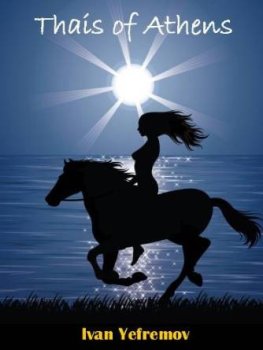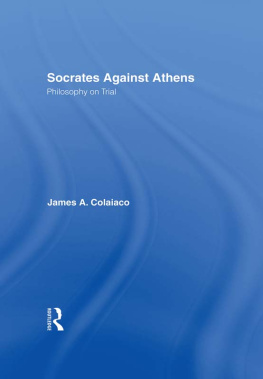Originally published in 1992 by the University of Illinois Press.
First published 2017 by Transaction Publishers
Published 2017 by Routledge
2 Park Square, Milton Park, Abingdon, Oxon OX14 4RN
711 Third Avenue, New York, NY 10017, USA
Routledge is an imprint of the Taylor & Francis Group, an informa business
New material this edition copyright 2017 by Taylor & Francis
All rights reserved. No part of this book may be reprinted or reproduced or utilised in any form or by any electronic, mechanical, or other means, now known or hereafter invented, including photocopying and recording, or in any information storage or retrieval system, without permission in writing from the publishers.
Notice:
Product or corporate names may be trademarks or registered trademarks, and are used only for identification and explanation without intent to infringe.
ISBN: 978-1-4128-6536-4 (pbk)
Library of Congress Cataloging-in-Publication Data
A catalog record for this book has been requested
By Richard Rhodes
In his classic study The Structure of Scientific Revolutions, the physicist and philosopher Thomas S. Kuhn offers a model of how scientific breakthroughs occur. Rather than simply emerging from an accumulation of research, Kuhn argues, major new insights are what today we would call disruptive, breaking through normal science and challenging one or more of its seemingly foundational paradigms.
Such breakthroughs come from new evidence which doesnt fit the old mold. They usually meet powerful resistance from those whose lifework has been what Kuhn calls the mopping-up operations of normal science, operations which engage most scientists throughout their careers. Kuhn doesnt dismiss such operations; to the contrary, he writes, they are honorable, important and fascinatingin the execution. But because the function of normal science is to consolidate and extend the reach of accepted rules, no part of [its] aimis to call forth new sorts of phenomena; indeed those that will not fit the box are often not seen at all.
The work of the American criminologist Dr. Lonnie H. Athens, I believe on good evidence, represents a major paradigm change in our understanding of human conflict, whether violent or nonviolent.
I first encountered Athens work sometime in the mid-1990s, scanning a catalog of books published by the University of Illinois Press. The catalog listed Athens 1992 book The Creation of Dangerous Violent Criminals, a study, it said, which was based on in-depth interviews Athens had conducted with 38 violent felons. Compared to statistical studies of police records or computed tomography scans of criminals brains, that approach seemed refreshingly direct, so I ordered a copy of the book. The explanation it offered of the process whereby violent criminals were socialized to become violent I found immediately crediblecredible prima facie, as lawyers say, on its face.
Evidence that is prima facie credible is usually so because we have personal experience of it. I experienced violence as a child, which I describe in my book A Hole in the World. Across a forty-year career as a journalist and historian, I have studied and written about violent people and violent events ranging from individual crimes to the Holocaust and the atomic bombings of World War II Japan. Those experiences primed me to recognize the validity of Athens model of violence development, which he calls violentization a technical coinage derived from the phrase violent socialization. (Socialization, my Oxford English Dictionary tells me, is the process by which a person learns to function within a particular society or group by internalizing its values and norms.)
Violentization seemed to me at the outset, and it seems even more to me now that I have studied it, tested it and drawn on its insights in my books, to be a breakthrough, authoritative, universal model of how human beings become violent. It fits the developmental history of every one of Americas school killers whose personal history is known. It fits the heavyweight boxer Mike Tyson. It fits Lee Harvey Oswald, President John F. Kennedys assassin, and the two killers profiled in Truman Capotes 1966 book In Cold Blood. It fits the police officers and SS recruits of Nazi Germany who served in the SS Einsatzgruppen, the special forces that followed behind the German army when it invaded the Soviet Union in June 1941 and shot some 1.5 million Jewish men, women and children into mass graves, before the invention of the death camps. And because violentization develops across a spectrum from brutalized victim to self-defender to violent criminal, Athens model also fits the truncated developmental history of soldiers, police officers, resistance fighters, and others whose violence is provoked and thus honorable, limited to protecting themselves and defending the rest of us.
Violence is disturbing. People have trouble thinking about it rationally. Most of us, for example, sharply distinguish between legal and illegal violence. We think theyre categorically different kinds of behavior. We think the violence that police and soldiers use to protect us is rational and good, or at least necessary, while the violence that criminals and terrorists use to assault us is irrational and bad, even crazy. Yet the process of learning to be violent is similar, up to a point, for both groups. Soldiers and police officers are socialized to use violence only when provokedto use violence within the limits of military and civilian law, professionally and on our behalfthrough an institutional adaptation of the violentization process, an adaptation evolved across the centuries from informal experience. The parallels between professional socialization to provoked violence and the informal social experiences that violent criminals pass through on their way to using unprovoked violence are striking. They offer compelling support for Athens model of violentization, particularly since the model also reveals how and why some people undergoing violentization, informally or professionally, move beyond provoked to unprovoked, criminal violenceincluding rogue cops and soldiers who commit atrocities.
The methodology Athens used to derive his violentization model has been challenged. The psychologist Stephen Pinker, for one, told me once that he excluded Athens work from his 2011 compendium The Better Angels of Our Nature, which seeks to explain the historic decline of violence in the West, because Athens sample size was too small. The late sociologist Robert K. Merton, impatient one day with my enthusiastic description of Athens violentization model, which contradicted Mertons competing model of deviance as a rebellion against social norms, scolded me that no biological phenomenon is ever one hundred percent. Both complaints misunderstand how scientists identify the causes of complex phenomena, whether sociological, medical, or physical. Identifying the cause of a phenomenon is independent of sample size; Pinkers criticism confused causation with correlation, which by definition cant determine causation but where sample size matters. And Athens field of violent felons was indeed a 100 percent sample, and deliberately so: all of the felons he interviewed had been convicted of committing a violent crime and admitted having done so; that was why he selected them for study.











